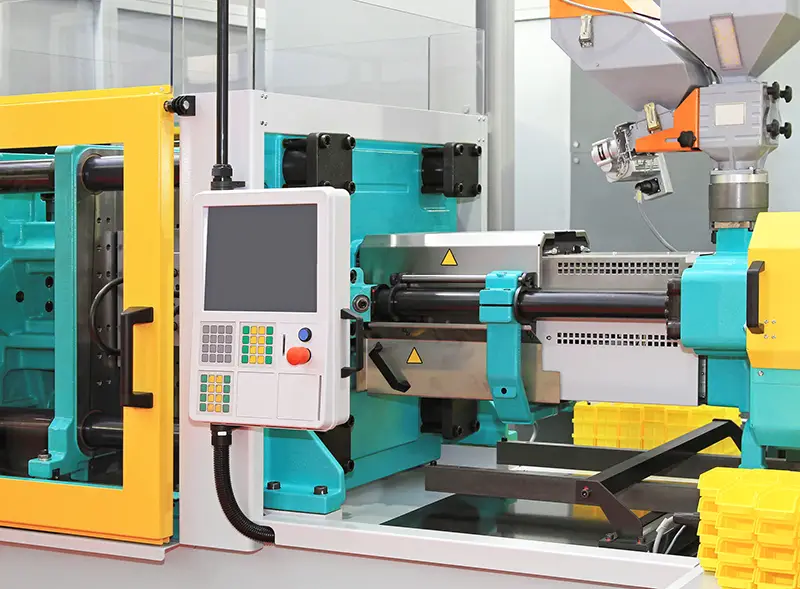Click here to get this post in PDF
The injection molding machine consists of four primary components: the base, the hopper, the barrel, and the clamping unit. In addition, there are secondary components such as the nozzle, ejector pins, split mold, injection unit, clamping unit, and hydraulic unit.
All the electronics and parts needed to run the machine are connected to the base. The electronics on the machine control a range of heaters, hydraulics, sensors, and injection pressure.
Below is a list of the different components of injection molding machines and what they do:
1. Hopper
The hopper is part of the injection molding machine, where the plastic material is poured before the injection molding process starts. There’s a dryer unit installed in the hopper to ensure the plastic material is free and moist. Small magnets may also be installed to prevent harmful metallic particles from finding their way into the machine. Next, the plastic material is poured into another component(called the barrel) from the hopper.
2. Barrel
The barrel heats the plastic material into a molten state so that plastic can flow through the barrel—the screw inside transfers the plastic into molds in the clamping unit. Therefore, the temperature in the barrel should be regulated to maintain the temperature for different plastic materials. The cylinder is used to transport, melt, compact, and press the plastic before it gets to the injection mold
3. Screw Motion or Reciprocating Screw
The reciprocating screw design helps to manage the temperature of the molten plastic. The screw moves plastic through the barrel from when the plastics are poured into the hopper and when it mixes the plastics that distribute heat throughout the mass. This mixing helps to clear the machine of different materials and colors from the previous production on the same injection molding machine.
4. Heaters
An injection molding machine has heaters for maintaining temperatures in conduits, nozzles, heating molds, and platens. A heating element installed in the barrel can melt the hopper’s molding material into liquid. Som injection molding heaters include band heaters, coil/nozzle heaters, cartridge and strip heaters, and insulated cloth heating jackets.
5. Nozzle
The nozzle is a part of the injection molding machine located at the bottom of the machine’s ejector system. It sends Iiquified plastic out of the barrel into the mold.
6. Extraction Pins or Ejector Pins
Ejector pins are essential in creating parts because they determine the outcome of the product. The metal injection mold consists of two sides (A and B). Extraction pins are on the B-side half of the injection mold; they extract the formed part. The pin mark comes out on finished products as dents.
7. Split Molds
Split molds are a type of injection mold where the jaws form the mold cavity. The jaws are injected on the corner of the nozzle, and when the mold opens, the injection molded part is released. The jaws can also be controlled on the ejector side; they are moved during or after opening the mold with hydraulic cylinders or mechanically using springs or air.
8. Clamping Unit
The clamping unit opens and closes an injection mold and ejects the molded products. The major types of clamping systems are the hydraulic and toggle configurations.
A mold has two steel parts joined to each large plate on the clamping unit. The clamping unit closes the two plates when the machine is ready to inject plastic into the cavity. This enables the plastic to flow into a mold to create the product. After the plastic solidifies and cools down, the clamping unit opens the mold and releases the product into a bin.
Other injection moulding machine components include the injection unit and hydraulic unit.
You may also like: Sustainable Manufacturing – Pursuing Eco-Friendly Operations
Image source: Depositphotos.com

